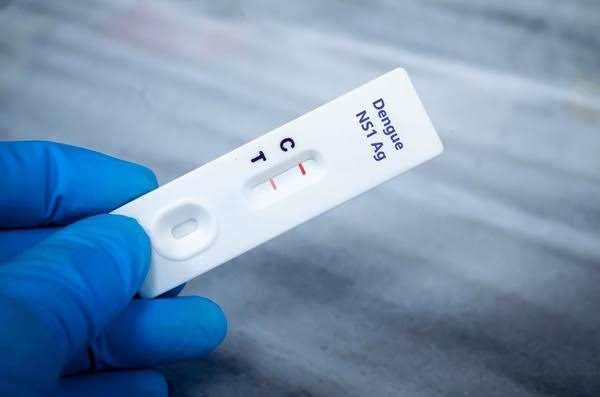Dengue Fever: A Growing Global Concern
Dengue fever, caused by the dengue virus (DENV), is a mosquito-borne illness that poses a significant public health threat, especially in tropical and subtropical regions. With over 50 million cases worldwide each year, this disease continues to be a major challenge for healthcare systems.
What is Dengue Virus?
Dengue virus is the most common arbovirus (virus transmitted by insects) and is primarily spread by Aedes aegypti and Aedes albopictus mosquitoes.
🔹 The virus has four distinct serotypes (DENV-1, DENV-2, DENV-3, and DENV-4).
🔹 A fifth serotype (DENV-5) was recently discovered.
🔹 A person can be infected multiple times with different serotypes, increasing the risk of severe complications.
Global Impact Of Dengue
:- World Dengue Day (15 June) raises awareness about dengue fever, a mosquito- borne disease affecting millions worldwide.
🌍 Global Statistics:
✔ Dengue is endemic in over 100 countries, putting 2.5 billion people at risk.
✔ Every year, 50 million cases occur worldwide.
✔ Around 500,000 cases develop severe dengue (mostly in children).
🇮🇳 Dengue in India:
✔ India has a high burden of dengue, affecting 31 states/union territories.
✔ Between 2010–2017, more than 600,000 cases and 1,560 deaths were reported.
✔ Urban areas are the most affected, with outbreaks peaking during the monsoon season.
✔ States like West Bengal, Tamil Nadu, Punjab, Kerala, Delhi, Karnataka, and Maharashtra report the highest cases.
Symptoms of Dengue Fever
Dengue symptoms can range from mild fever to life-threatening conditions. The WHO classifies dengue into three categories:
1. Dengue Fever (DF)
✔ High fever (also called biphasic fever, breakbone fever, or saddleback fever)
✔ Skin rash (maculopapular rash) on the chest and limbs
✔ Severe frontal headache
✔ Muscle and joint pain
✔ Swollen lymph nodes
✔ Retro-orbital pain (pain behind the eyes)
✔ Loss of appetite, nausea, and vomiting
2. Dengue Hemorrhagic Fever (DHF)
✔ Continuous high fever
✔ Enlarged liver (hepatomegaly)
✔ Low platelet count (<100,000/mm³)
✔ Increased hematocrit levels (≥20%)
✔ Bleeding from skin, nose, mouth and gums.
3. Dengue Shock Syndrome (DSS)
✔ All DHF symptoms plus shock symptoms, including:
✔ Weak, rapid pulse
✔ Narrow pulse pressure (<20 mmHg) or low BP
✔ Cold, clammy skin
✔ Restlessness
📌 WHO 2009 Classification:
This is the most recently describe classification by WHO which grades dengue into two stages based on the severity of infection :
A) Dengue with or without warning signs
B) Severe Dengue
Factors That Affect Severity
✅ Infecting Serotype:
DENV-2 is more dangerous than other types.
✅ Sequence of Infection:
Getting DENV-1 first, then DENV-2 increases the risk of dengue hemorrhages fever (DHF) & dengue shock syndrome (DSS).
✅ Age Factor:
Though all age groups are affected, children under 12 years are more prone to DHF and DSS.
Diagnosis of Dengue
🏥 Dengue can be diagnosed using the following tests:
1. NS1 Antigen Test (Early Diagnosis)
✔ Detects NS1 antigen in serum using ELISA or ICT.
✔ Can identify infection from Day 1 and remains positive for up to 18 days.
2. Antibody Detection (IgM & IgG ELISA)
✔ Helps determine recent or past infections.
3. PCR and Virus Isolation
✔ Detects dengue virus in the blood from Day -1 to Day +5 of symptoms.
4. Rapid Diagnostic Tests (RDTs)
✔ Quick tests for IgM antibodies or NS1 antigen (less reliable).
5. Genotype Detection
✔ Identifies dengue virus genotypes using molecular typing.
Treatment & Management
⚠ No specific antiviral treatment for dengue exists. Treatment focuses on supportive care:
Supportive Treatment
✔ Hydration & fluid replacement
✔ Monitoring platelet count & blood pressure
✔ Pain relief (Paracetamol is preferred; avoid NSAIDs like ibuprofen)
✔ Hospitalization for severe cases
✔ Plasma replacement for DHF & DSS
✔ Electrolyte correction
✔ Platelet transfusion if needed
Prevention: Dengue Vaccine & Mosquito Control
Dengue Vaccine (CYD-TDV - Dengvaxia)
✔ Approved in Mexico, Brazil, Indonesia, Thailand, and Singapore.
✔ Recommended for ages 9–45 years.
✔ Provides 80% protection against severe dengue.
✔ WHO recommends use in high-burden areas.
✔ Schedule: 3 injections of 0.5 ml (subcutaneous) at 6-month intervals.
✔ Available in lyophilized form (reconstituted with normal saline).
🚫 Contraindications:
• Allergic reactions to vaccines
• Immunodeficient individuals (e.g., HIV)
• Pregnant or breastfeeding women
Mosquito Control Measures
Since there is no specific cure for dengue, vector control is the best strategy:
✅ Eliminate stagnant water where mosquitoes breed.
✅ Use insect repellents & mosquito nets.
✅ Community-wide fogging & spraying insecticides.
✅ Increase public awareness about prevention.
Frequently Asked Questions (FAQs)
🔹 Q1: How do I know if I have dengue fever?
✔ If you have high fever, headache, joint pain, rash, and nausea, consult a doctor and get tested.
🔹 Q2: How is dengue different from malaria?
✔ Dengue has biphasic fever and rash, while malaria has cyclic fever with chills and sweating.
🔹 Q3: Can dengue be spread from person to person?
✔ No, dengue is not contagious. It is spread only through mosquito bites.
🔹 Q4: What should I eat if I have dengue?
✔ Hydrating foods (coconut water, soups) and iron-rich foods (leafy greens, pomegranate) can help.
🔹 Q5: When should I go to the hospital?
✔ Seek medical help if you experience severe abdominal pain, persistent vomiting, bleeding, or difficulty breathing.
Conclusion
Dengue remains a major global health concern, especially in tropical regions like India. Early diagnosis, supportive treatment, and effective prevention can reduce the disease burden. Governments, healthcare workers, and individuals must collaborate to strengthen surveillance, vaccination programs, and mosquito control efforts.
By taking preventive measures, we can fight dengue together!
🔍 Sources:



Comments
Post a Comment